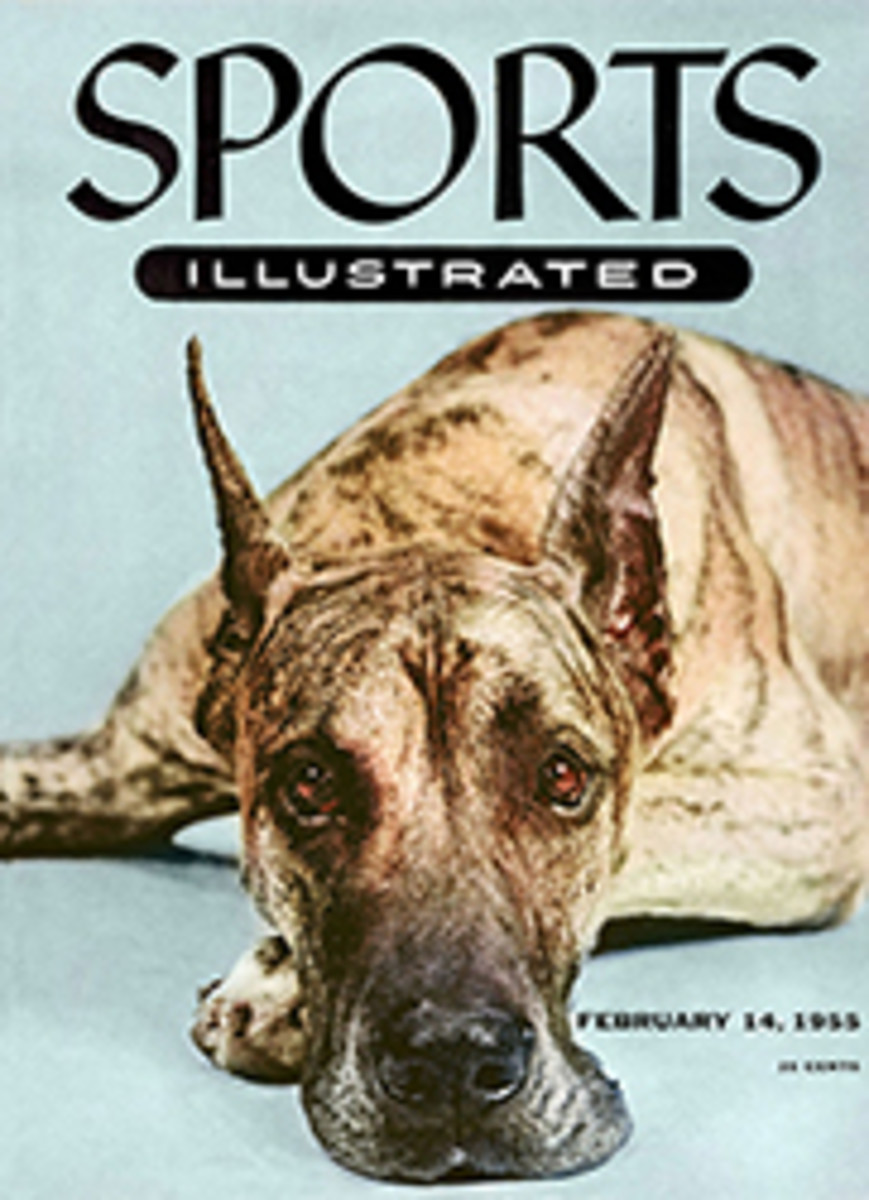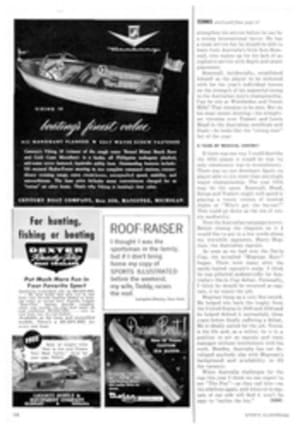
YOU SHOULD KNOW: if you are taking up figure skating
New popularity
Historically, the idea of making meaningful markings on ice originated on the canals of 15th century Holland. Americans took little interest in figure skating until the turn of the present century but today, with the help of artificial ice, the sport is enjoying a phenomenal growth, and with climate no longer a limitation, there are prospects of its becoming truly national in scope. Home-grown North American skaters are beginning to challenge the traditional superiority of Europeans and several have won world titles.
Buying boots...
Boots and blades are listed separately because that is the way they should be bought. When buying boots, remember a good fit is vital. Don't worry about weak ankles, because a well-fitted boot is so tight around the heel that your ankles can't waver. Get your boot a half to a full size smaller than your ordinary walking shoes. Have it fitted over a lightweight sock. Leave plenty of room to wiggle your toes, but stress tightness around the heel and ankle. Ready-made boots range from $15 to $30 a pair in price, custom-made ones $50 to $85. Custom boots are worth it if you're serious about figure skating. They'll fit much better and will last the weekend skater five to 15 years. In fitting children, have special inner soles made by your shoemaker if you get a big boot with the idea the child will grow into it. The inner sole will give proper support in an oversize boot.
...and blades
A pair of blades will cost $10 to $40 and you'll do well to get the best as they will hold a good edge and last almost indefinitely. If the boots wear out, you can transfer the blades to a new pair. Make sure you get a figure blade, one with teeth and rounded in front. Blades should be set on with screws (not rivets) slightly inside the center line of the boot for easier balance. Keep the blades sharp, leaving two raised edges on each, with a hollow-ground groove between. Wipe them after each use to prevent rusting and protect them with rubber or wood guards when you're not using them.
Lessons
Figure skating cannot be self-taught. Lessons are admittedly expensive, but they are necessary. Private lessons range from $3 for ordinary teachers to $6 for experts per half hour. But beginners can learn satisfactorily through group instruction at $1 or $1.50 a lesson. Information on accredited instructors is available from the Professional Skaters Guild of America, 1617 East Boulder St., Colorado Springs, Colo.
A few hints
Basically, remember that skating posture is like walking posture with the addition of a pronounced forward bend of the knees and ankles and a slight sidewise lean to the whole body. In plain forward and backward stroking on ice, push from the inside edge of the blade (the edge nearer the inside of your foot) but skate on the outside edge. When shifting your weight from one foot to another, keep your feet as close together as possible. Keep your full body weight over the leg you are skating on by pressing the hip on that side well under you. Learn to do long strokes forward and backward, pushing cleanly from one foot to the other.
Other aids
You can learn a lot from what has been written about figure skating and from intelligent observation of good skaters, but this is only supplementary to the personal instruction that is necessary. The U.S. Figure Skating Association, 30 Huntington Ave., Boston, Mass. publishes a monthly magazine and several useful technical manuals.
Recommended books are: Figure Skating by Willy Boeckl, $4.95; Figure and Dance Skating by Paul von Gassner, $7.50, and Skating for Beginners by Barbara Ann Scott and Michael Kirby, $3.75.

